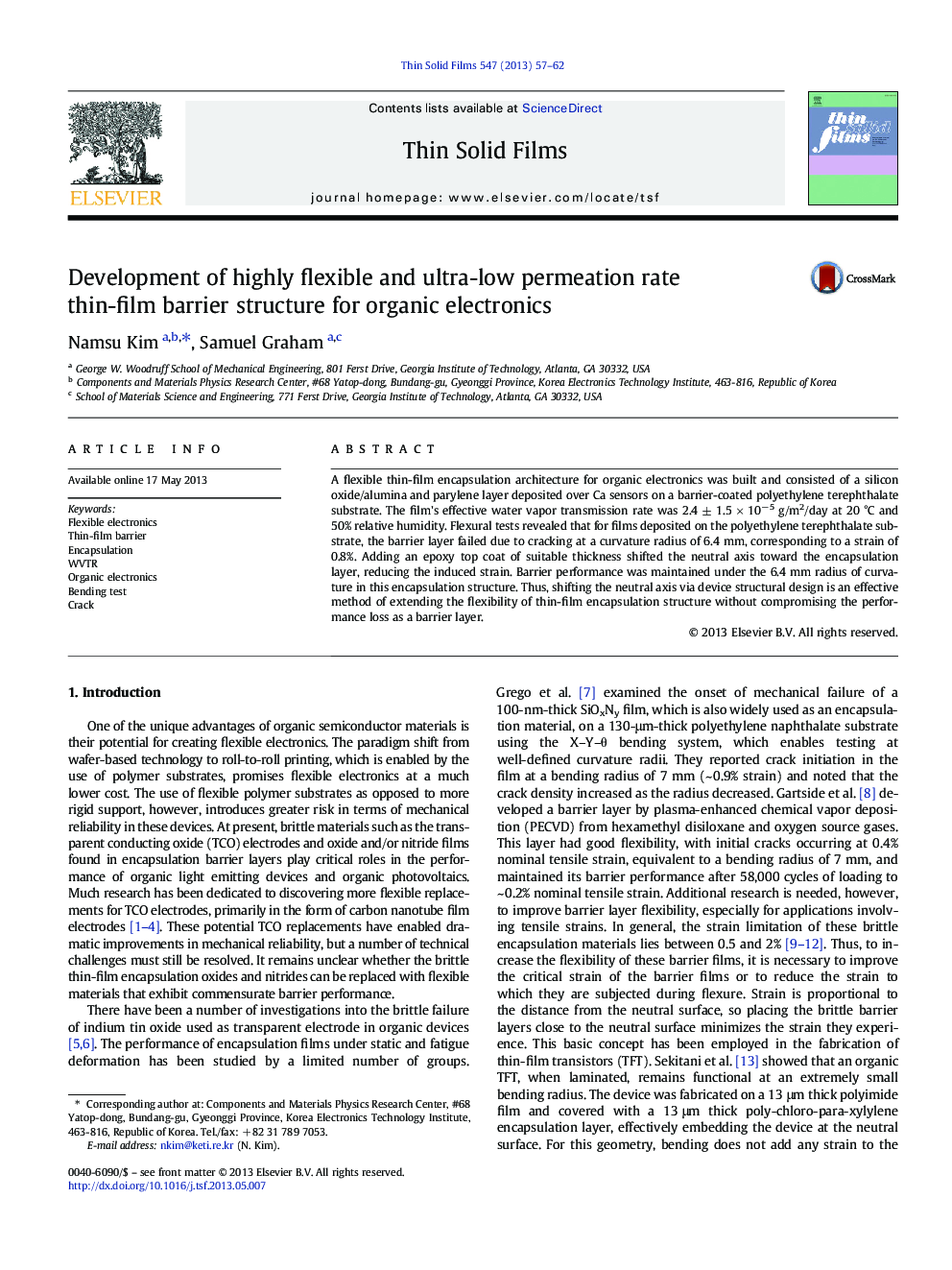| Article ID | Journal | Published Year | Pages | File Type |
|---|---|---|---|---|
| 1665888 | Thin Solid Films | 2013 | 6 Pages |
Abstract
A flexible thin-film encapsulation architecture for organic electronics was built and consisted of a silicon oxide/alumina and parylene layer deposited over Ca sensors on a barrier-coated polyethylene terephthalate substrate. The film's effective water vapor transmission rate was 2.4 ± 1.5 Ã 10â 5 g/m2/day at 20 °C and 50% relative humidity. Flexural tests revealed that for films deposited on the polyethylene terephthalate substrate, the barrier layer failed due to cracking at a curvature radius of 6.4 mm, corresponding to a strain of 0.8%. Adding an epoxy top coat of suitable thickness shifted the neutral axis toward the encapsulation layer, reducing the induced strain. Barrier performance was maintained under the 6.4 mm radius of curvature in this encapsulation structure. Thus, shifting the neutral axis via device structural design is an effective method of extending the flexibility of thin-film encapsulation structure without compromising the performance loss as a barrier layer.
Related Topics
Physical Sciences and Engineering
Materials Science
Nanotechnology
Authors
Namsu Kim, Samuel Graham,
